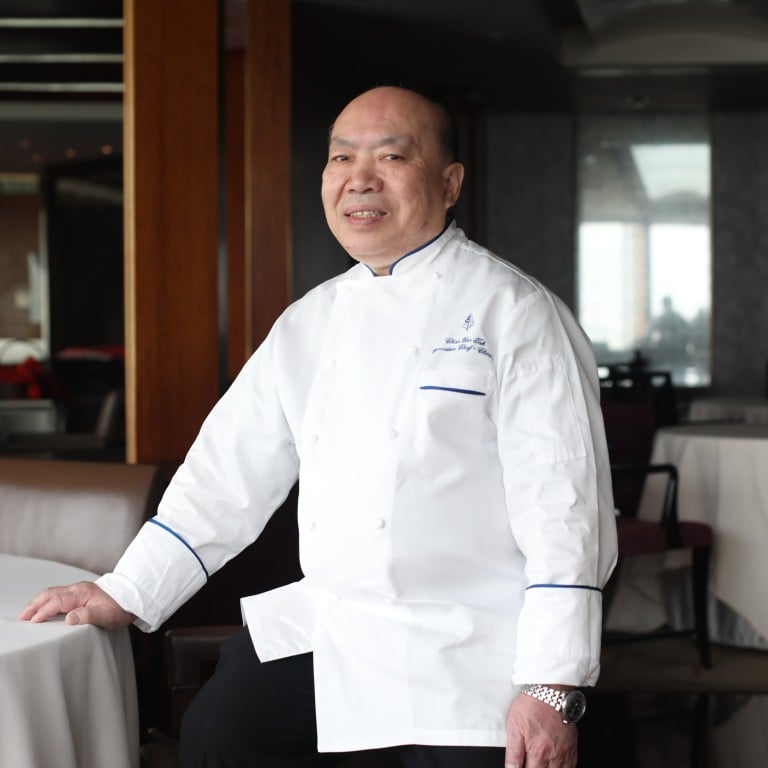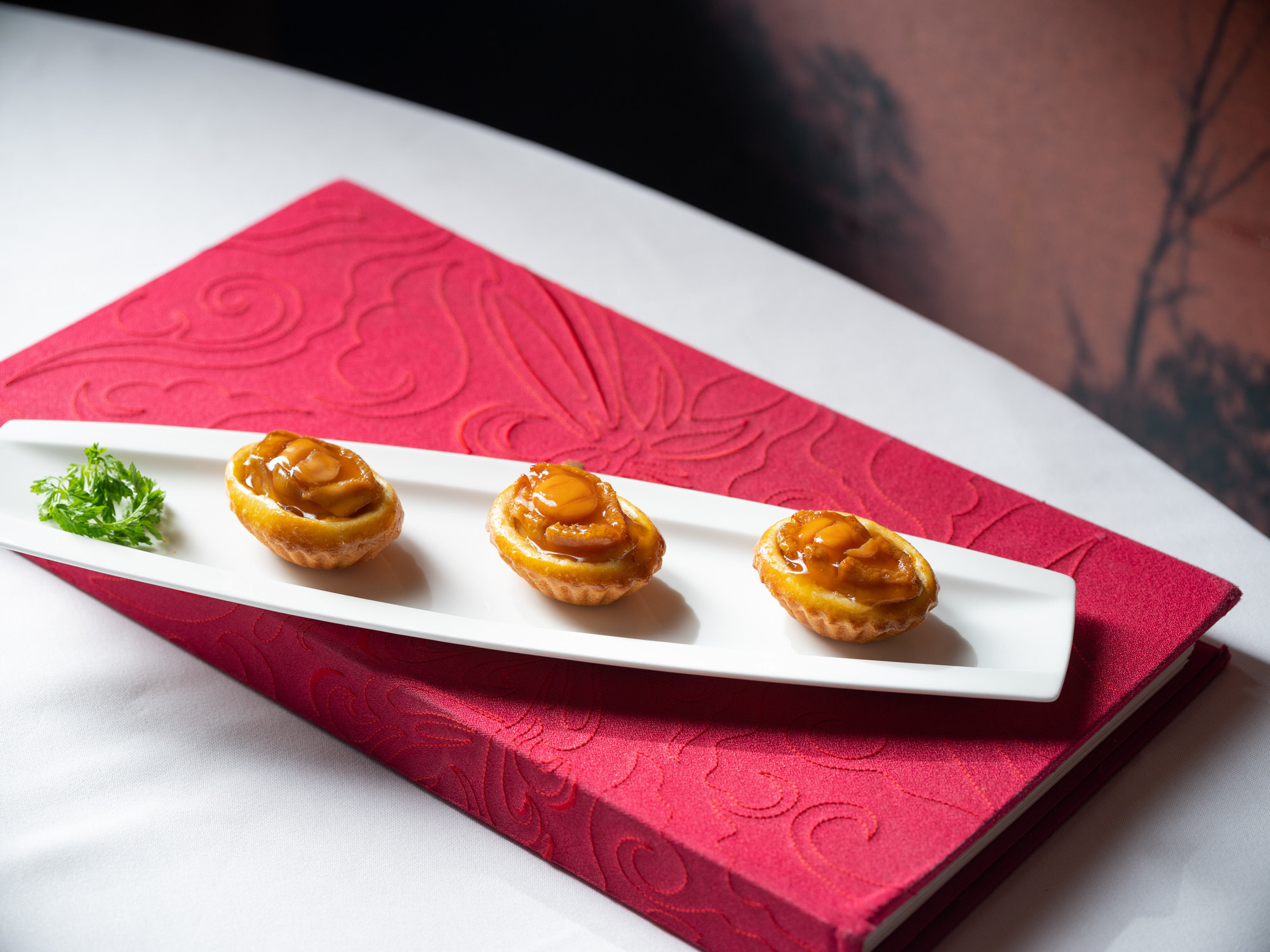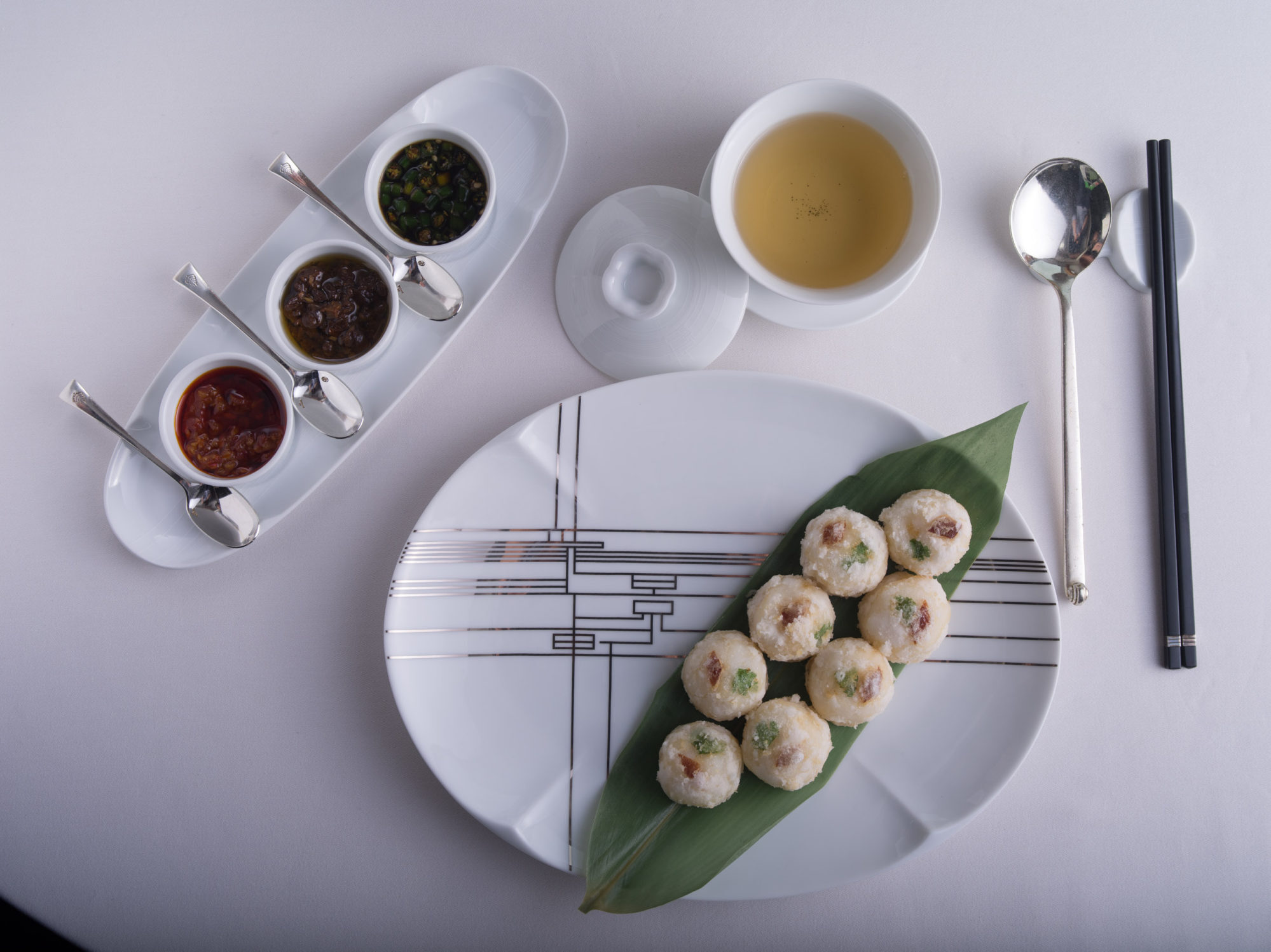
Four Seasons hotel chef on the secret to three Michelin stars, creating dim sum for Lung King Heen and what he eats at home
- Lung King Heen chef Chan Yan-tak had already had a full career and retired before becoming the first Chinese chef to receive three Michelin stars in Hong Kong
- Nice ingredients matter, the Four Seasons chef says, as does serving food piping hot and paying staff well, many of whom have worked with him for decades
“[When I was young] we didn’t really celebrate [Lunar New Year] as my family wasn’t well off. A day or two before the New Year, we just got some new clothes. There are five siblings and I’m the oldest. It wasn’t easy to make a living then. We couldn’t afford elaborate feasts, at most we would eat chicken. After I got married, we had fresh chicken, which was cheaper than pork then.”
How did you get into cooking?
“My father died when I was 11 years old and my mother cleaned offices, so I started working when I was 14 years old at a teahouse near where we lived, selling dim sum that I carried in a big basket, going table to table.
“I did that for two or three months until a friend told me about a kitchen job in a restaurant where I could sleep and eat. It was Dai Sam Yuen, on Hennessy Road in Wan Chai [on Hong Kong Island], where DBS Bank is now.

“Later, when I got promoted, I did catering for the restaurant. We had to carry the stoves and ingredients to the customer’s home, and then bring back all the dirty dishes and chopsticks and wash them.
“When I started working in the restaurant, we lived in the dormitory. There was no overnight bus – we had to sleep in the restaurant. I only went home once or twice a month when I got my salary. I would take the Wan Chai ferry back to Kowloon and go home for one day and then back to work early the next day. We didn’t know it was tough – we were all in the same situation.”
‘There’s fire everywhere’: how a Hong Kong Hyatt chef ‘fell into’ cooking
Why did you leave the restaurant industry?
“In 1974, I changed jobs to train juvenile offenders to cook so they would be more employable after they were released. I taught them how to cook for six months. I took this civil service job because it was stable. I even had to do a physical test to get it.
“I worked at the prison in Lai Chi Kok for three months and at Stanley Prison for four months, but then I was going to be sent to Sha Tsui Correctional Institution, on Lantau [Island]. It was far away so I would have to stay there for a few months. I was planning to get married that mid-November and, at most, I could have had one or two days’ leave, which wasn’t feasible. I had no choice but to quit the job.
“My superiors were surprised because they said I was doing a good job. At that time, if you quit the civil service, you had to give back one month’s worth of wages, which I did.”

Where did you go afterwards?
“In 1984, I opened Lai Ching Heen at the Regent Hong Kong, and was there until 1999. Every month, I had to come up with 20 new dishes, including a soup, petits fours, dessert and other dishes. When you have enough experience it isn’t too difficult to come up with new dishes.
“In 1999, my wife passed away and my daughter was only 13 years old, still studying in high school, so I decided to be a stay-at-home dad, cooking for her and ironing her uniform. My son is eight years older than her.”

You came out of early retirement to go to Lung King Heen. What dishes did you create for its opening, in 2005?
“We needed new dim sum dishes so I created the baked whole abalone puff with diced chicken. The crispy scallops with pear, shrimp paste and Yunnan ham we tried with different fruits like banana, mango and apple. All the restaurant staff tried it and said it goes best with pear so I followed their suggestion.
“I also created a ‘rice’ dish using orzo pasta, which we called fried puntalette with minced beef in XO sauce. When I was experimenting, the other chefs asked why I was making pasta and I showed them I was going to make fried rice with it. They joked we are not a cha chaan teng. But many regular customers like the dish.”

What is the secret to Lung King Heen’s Michelin success?
“I’m not the type to focus too much on the presentation of dishes because by the time you serve them, the food is cold. The food has to arrive piping hot.

“It was only afterwards that I found out in the Chinese newspapers how prestigious the guide is. Lots of reporters came to interview me.”

What does Lung King Heen have in store for Lunar New Year?
“I work with the dim sum chef to come up with New Year puddings. This year, it’s water chestnut with camomile tea, lemongrass and orange zest, which makes it refreshing. The tea can’t be too strong otherwise it will taste bitter, and not too weak otherwise there’s not enough flavour.”
What do you like to eat?
“At home, I just have simple food, like noodles, or even a boiled egg. When I have late-night meals with friends in the industry we go to ordinary places. These past few years I have often gone to Ju Xing Home [in Prince Edward], where people think I’m an investor – I’m not.”

